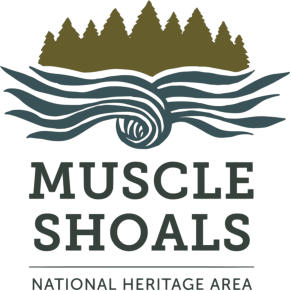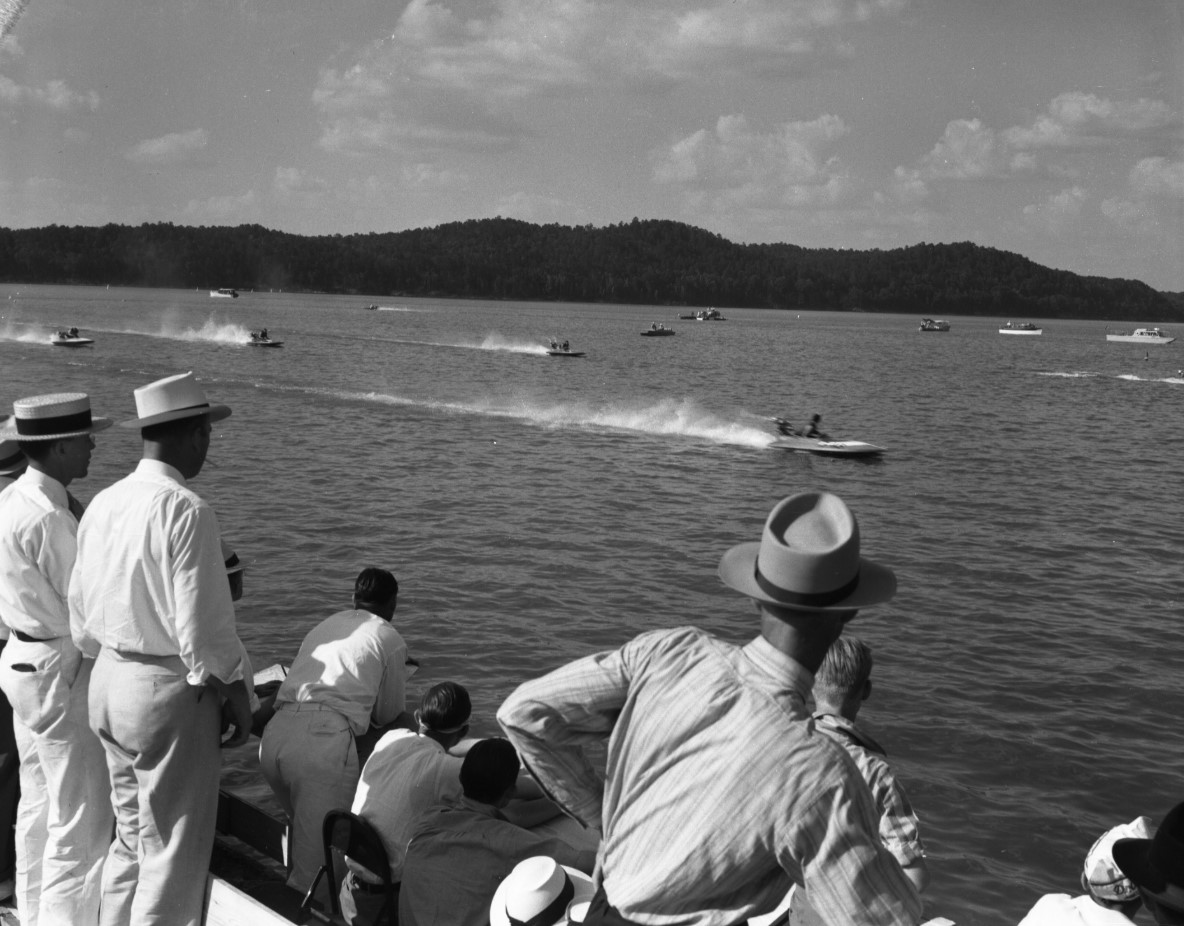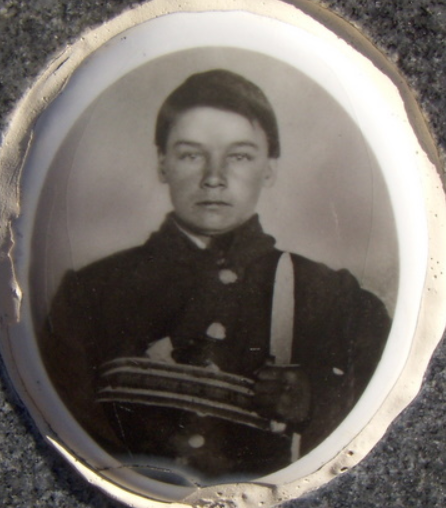hile the story of the chestnut blight has been told in many ways and in many places, a quick overview of what happened to the giants of the eastern forests is key to understanding the work of The American Chestnut Foundation and the significance of chestnut stories.
This story begins in 1904 in the Bronx Zoological Park in New York City. Employee H.W. Merkel noticed that large sections of the park’s chestnut trees’ bark were dying and the overall health of the trees deteriorating. Dr. A. A. Murrill, who worked for the New York Botanical Gardens, was called in to study the affected trees. He identified the cause: a new fungus, which he called Diaporthe parasititca (the name was changed in 1978 to Cryphonectria parasitica). It is unlikely that the trees in the Bronx Zoo were the first to be infected by the fungus, which had come into the port of New York from Asia, but rather it was the first place that someone paid attention enough to notice it. The blight spread quickly, infecting trees in other locations in New York as well as New Jersey and Connecticut. Other scientists studying the blight, such as Dr. Haven Metcalf and Dr. J.F. Collins, published bulletins about the disease, including recommendations for how to slow the spread. Unfortunately, the advice they gave did not stop the blight, and it began pushing further south. It reached West Virginia by 1911, pushing into the heart of Appalachia where the tree had an important place in the lives of mountain communities. Combined with ink disease, which had been attacking the trees in the southern end of the chestnut’s range since the 19th century, the blight caused widespread devastation. By 1950, eighty percent of the American chestnut trees had died. Today, while millions of stump sprouts remain, few mature trees have survived.
The blight was able to spread so rapidly for a couple of reasons. First, the fungus issues both spring spores and winter spores. The spring spores came in the form of a sticky mass, which stuck to birds and insects who then carried it to other trees. In the winter, the wind carried dry spore clouds from infected trees to other trees nearby. If the fungus found a crack in the bark, which was quite common in the American chestnut tree, it could invade the tree. This caused cankers to form that eventually girdled the tree and killed it. Other species of trees — pin oak, scarlet oak, white oak, post oak, southern live oak, sumac and more — can also carry the blight but are not negatively impacted by it. This means that even if there are large gaps between chestnut tree stands, the blight can still travel across them.
Work on developing blight-resistant American chestnuts began shortly after the fungus’ arrival, but it was not until 1981 that a major breakthrough came. To tackle the problem, Dr. Charles Burham, professor emeritus of the Department of Agronomy and Plant Genetics at the University of Minnesota, applied the methodology he had used to develop hybrid strains of corn to the American chestnut. He thus developed the backcross breeding program subsequently used by TACF. While the American chestnut is susceptible to blight, the Chinese chestnut is not. However, the Chinese chestnut lacks many of the characteristics that made the American chestnut such an integral part of life in the eastern United States, including the height and straight trunk. Working with both Chinese chestnuts and American chestnuts that showed some signs of blight resistance (e.g., the Clapper tree), scientists moved toward a tree that has the desired characteristics of the American tree and the blight resistance of the Chinese tree. While the breeding program took a long time to implement, since trees grow much more slowly than corn, other people recognized in the idea the potential for a true solution to the loss of the American chestnut. Early supporters, including Phillip Rutter and Dr. Harold Pellet from the University of Minnesota, began implementing Burham’s program. They also realized that gaining long-term financial support would be fundamentally important to the success of the breeding program. The solution was forming TACF.
TACF has many partners and allies also working towards the restoration of the chestnut and the preservation of memories of the tree. Colleges and universities have been engaged with the process. Successful work on developing a blight-resistant transgenic chestnut tree has taken place at SUNY’s College of Environmental Science and Forestry’s American Chestnut Research and Restoration Center in Syracuse, New York. Other organizations are also working on the tree’s restoration, including the American Chestnut Cooperator’s Foundation (associated with Virginia Tech and Concord College), which has focused on developing blight resistance in all-American chestnut trees, rather than in hybrid trees. And just as science takes place outside of Meadowview Farms and the other TACF orchards, so too does the gathering of chestnut stories. University of Tennessee Chattanooga student Bethany Baxter gathered oral histories for her master’s thesis “An Oral History of the American Chestnut in Southern Appalachia.” The interviews are available online through the UTC Library’s website. Chestnut stories also appear in folklore collections, such as Foxfire 6 (1980), as well as in the folklore and memories gathered by Charlotte Ross of Appalachian State University. Today, the chestnut community also has a strong online presence. In Facebook groups such as “The American Chestnut Research and Restoration Project,” people share their chestnut stories and pictures of the trees they have planted or found, as well as ask for help identifying trees and for advice about caring for chestnuts. In 2007, TACF also published Mighty Giants: An American Chestnut Anthology. The anthology includes reprints from the journal, excerpts from the Foxfire interviews, photographs and drawings of the trees as well as chestnut stories gathered by TACF.
One of these stories, that of William Good, is an example of how TACF uses chestnut memories to emphasize the tree’s prominence in the lives of residents of rural communities and help justify the restoration effort. In an interview with Charles A. Miller, Good remembered how farmers fattened their hogs off chestnuts: “In the fall, because people didn’t raise corn to feed their hogs, farmers would let them run in the mountain where they fattened up on chestnuts. The hogs would have to eat through the big burs on the outside to get the nut out…the hogs must have liked the nuts so much they would chew through them until their mouths were bleeding.”
In an interview that appeared in Foxfire 6 and was reprinted in the journal, Noel Moore recollected that people in the Appalachians did not build fences to keep their stock in; they instead fenced around their homes and fields to keep out the free-range stock wandering the woods. Each fall, farmers would round up their hogs who had grown fat on acorns and chestnuts and butcher them. Chestnuts also served as an important food source for wild animals, including turkey, black bear, white-tailed deer, gray fox squirrels and the now-extinct chestnut moth. These animals, in turn, fed those who hunted them.
Chestnuts also were an important food source for people. Myra McAllister, who grew up in Virginia – recalled that she liked chestnuts “raw, boiled and roasted by an open fire.” Cecil Clink, who grew up in North Bridgewater, Pennsylvania, remembered filling old flour sacks with the nuts, which his mother would store in the family’s “butry” – or buttery, “with the smoked hams…[they ate] the nuts boiled, or put them on the cook stove and roast them.” Other people made stuffing and traditional Cherokee bread out of the nuts. Since they could not grind the nuts into flour because they were too soft, they pounded the nuts by hand into flour instead. And it was not just the nuts themselves that people loved. Noel Moore remembered the taste of the honey that bees made from the chestnut blossoms. The trees also had medicinal uses — the Mohegans made tea from the leaves to treat rheumatism and colds and the Cherokee made a cough syrup from its leaves.
Some people recalled the act of selling chestnuts, which gave many families cash that they might otherwise not have had – likely making it a memorable moment. In “Where There Are Mountains,” Donald Davis shared the chestnut story of John McCaulley, who as a young man had gathered chestnuts for sale. The nuts he gathered sold for four dollars a bushel in Knoxville, Tennessee – and McCaulley could gather up to seven bushels a day. Jake Waldroop remembered seeing wagons loaded with chestnuts in his northeast Georgia mountain community. The wagons headed to “Tocca, Lavonia, Athens, all the way to Atlanta, Georgia.” Noel Moore recalled seeing families coming from the mountains and heading to the store in the fall, laden with bags of chestnuts. They traded the bags for “coffee and sugar and flour and things that they had to buy to live on through the winter.” Exchanging chestnuts for supplies or for cash was “much less risky than moonshining.” To the north in Vittoria, Ontario, Donald McCall, whose father owned a store in the village, recollected that “farmers counted on the money from their chestnuts to pay taxes on the farm.” The trees themselves also had value. William B. Wood recalled that his father tried to save the family farm during the Great Depression by felling a huge chestnut tree dead from the blight that Wood called “The Chestnut Ghost” and selling the wood. Unfortunately, the plan did not work, and the family lost the farm.
Other stories connect to the “usefulness” of the tree. Because chestnut wood is “even grained and durable…light in weight and easily worked” the tree was used for a wide variety of purposes. Georgia Miller, who was 101 when she wrote “Chestnuts before the Blight,” recalled the split-rail fences that lined the edges of pastures. The chestnut wood split easily and lasted longer than that of other species, making it good material for what some called “snake fences.” Daniel Hallett, born in New Jersey in 1911, said his family used chestnut to trim doors and windows and also for chair rails. Dr. Edwin Flinn’s story (told by Dr. William Lord in 2014), which focuses on the extraction of tannins from dead chestnut trees, shows that even after the blight stuck the tree remained valuable.





